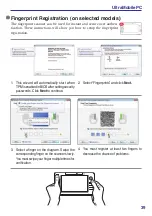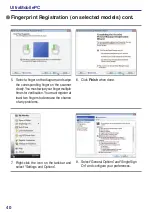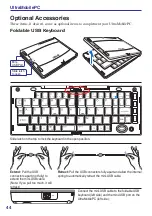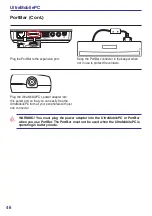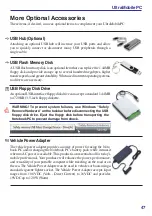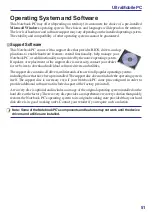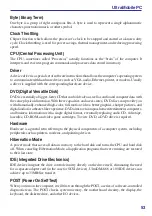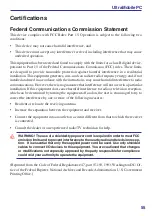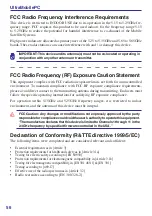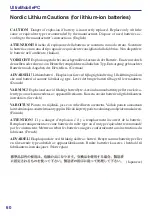
UltraMobilePC
3
Byte (Binary Term)
One byte is a group of eight contiguous bits. A byte is used to represent a single alphanumeric
character, punctuation mark, or other symbol.
Clock Throttling
Chipset function which allows the processor’s clock to be stopped and started at a known duty
cycle. Clock throttling is used for power savings, thermal management, and reducing processing
speed.
CPU (Central Processing Unit)
The CPU, sometimes called “Processor,” actually functions as the “brain” of the computer. It
interprets and executes program commands and processes data stored in memory.
Driver
A device driver is a special set of software instructions that allows the computer’s operating system
to communicate with hardware devices such as VGA, audio, Ethernet, printer, or modem. Usually
a driver is supplied with the corresponding hardware device.
DVD (Digital Versatile Disk)
DVD is essentially a bigger, faster CD that can hold video as well as audio and computer data with
the same physical dimension. With these capacities and access rates, DVD discs can provide you
with dramatically-enhanced high-color, full-motion videos, better graphics, sharper pictures, and
digital audio for a theater-like experience. DVD aims to encompass home entertainment, computers,
and business information with a single digital format, eventually replacing audio CD, videotape,
laserdisc, CD-ROM, and video game cartridges. To view DVD, a DVD drive is required.
Hardware
Hardware is a general term referring to the physical components of a computer system, including
peripherals such as printers, modems, and pointing devices.
Hibernation Mode
A power mode that saves all data in memory to the hard disk and turns the CPU and hard disk
off. When canceling Hibernation Mode, all application programs that were running are restored
to their last state.
IDE (Integrated Drive Electronics)
IDE devices integrate the drive control circuitry directly on the drive itself, eliminating the need
for a separate adapter card (in the case for SCSI devices). UltraDMA/66 or 100 IDE devices can
achieve up to 33MB/Sec transfer.
POST (Power On Self Test)
When you turn on the computer, it will first run through the POST, a series of software-controlled
diagnostic tests. The POST checks system memory, the motherboard circuitry, the display, the
keyboard, the diskette drive, and other I/O devices.

